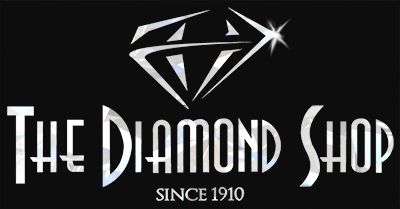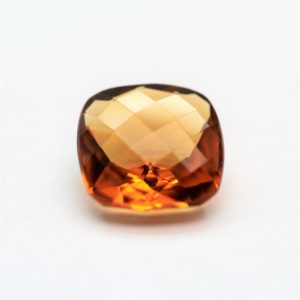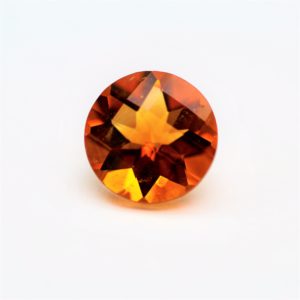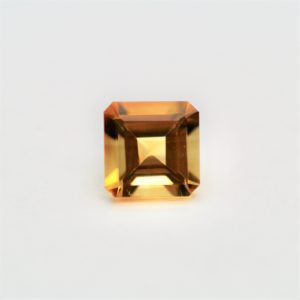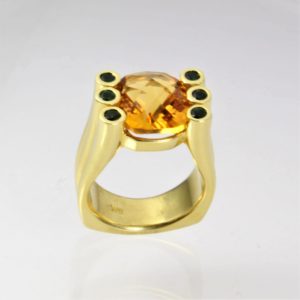Citrine’s color ranges from yellow, to orangey yellow, to yellowish orange, to brownish orange. Red-orange or Red-brown colors are rarer than the other common quartz. Citrines with more of a red color are known as Madeira citrine after the Madeira Islands, a region in Portugal. The name is after wines of similar color made in Natural Citrine is found in the Ural Mountains of Russia and in Madagascar. Once known as “yellow quartz”, the name was replaced with “citrine” in 1556. Natural citrine is rare, and today most citrine quartz is the result of heat treatment of amethyst quartz. As the rarity of finding natural citrine continued, gemologists adapted to heat treatment to achieve the desired colors of citrine.
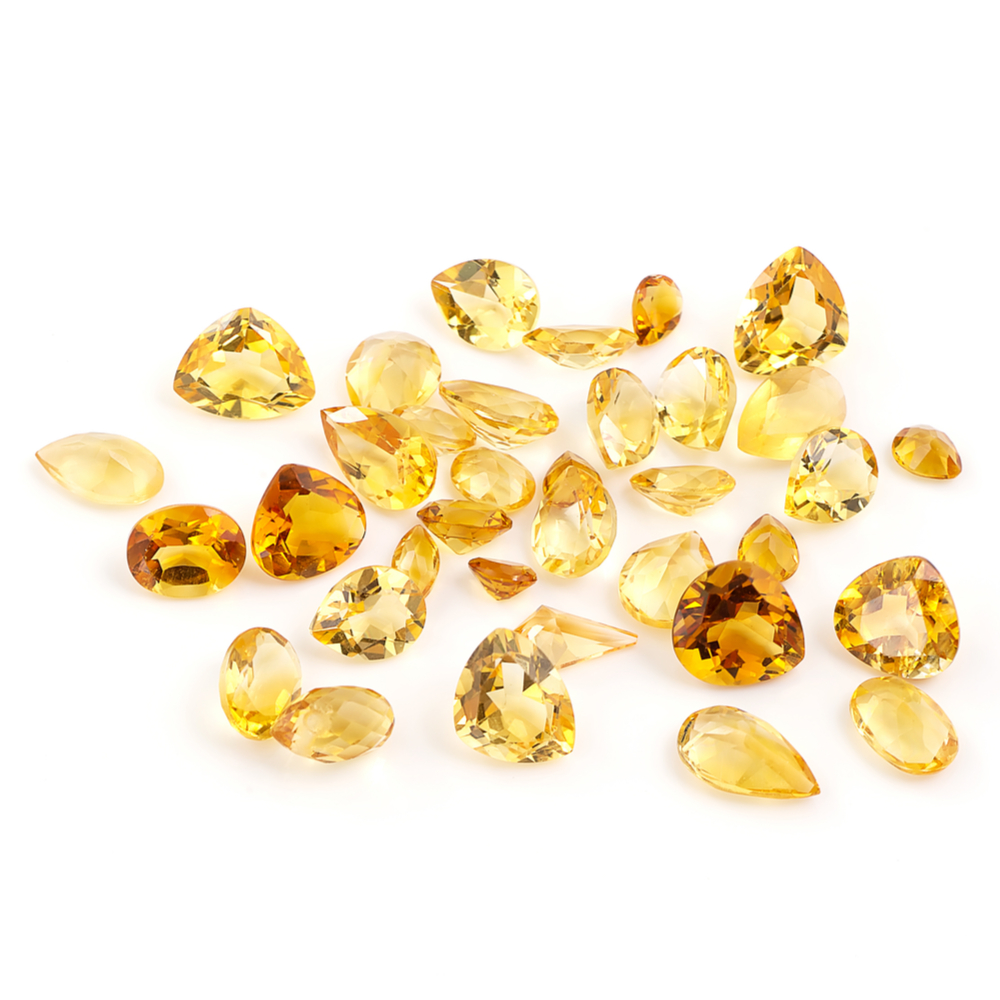
Birthstone
November
Zodiac
Gemini
Alternate: May 21–June 21
Anniversary
13th Wedding Anniversary
The majority of modern-day citrine comes from Brazil; however, natural citrine can also be found in the Ural Mountains of Russia, France, and Madagascar, among other places. Citrine is the most affordable of the earth-toned gemstones. Its lemony luster is the perfect complement to warm colors, and offers a striking contrast against black, gray, and blue. Citrine is the birthstone for November and used to celebrate the 13th wedding anniversary.
Citrine derives from Old French of “citrin” meaning lemon-colored, very fitting for this vibrant stone. Citrine has been used ornamentally for thousands of years. In Ancient Greece, citrine was used as a decorative gem. 17th century Scottish men embellished the handles of daggers and swords with citrine. More recently, citrine jewelry was commonplace during the Art Deco era between World War I and World War II. Citrine is believed to have the power to activate creativity and intuition. Citrine assists in manifesting abundance, wealth, and prosperity. This influences more of a positive attitude, promoting happiness and joy while guarding from negative energies.
